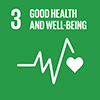ANIMAL SCIENCE·VETERINARY SCIENCERE·SOURCE INSECT
DAI PengYuan, SHEN Dan, TANG Qian, LI YanSen, LI ChunMei
With the improvement of livestock and poultry intensive breeding, high density breeding livestock and poultry farms air quality problem becomes increasingly prominent. The livestock production process can generate a large number of PM, which has become an important source of fine particulate PM2.5 (aerodynamic diameter ≤ 2.5 μm) and PM10 (aerodynamic diameter ≤ 10 μm ) in atmosphere, affecting the air quality and the health of livestock seriously. PM in livestock houses is mainly organic and mainly from feed, feces, feathers, dander, containing C, H, O, N, S, Ca, Na, Mg, Al, K, and other elements; the surface of PM also adheres to bacteria, fungi, viruses, endotoxins, ammonia gas, hydrogen sulfide and other harmful substances. It was found that PM concentration in chicken house was higher than that in pig house; PM concentration in livestock houses was positively correlated with the age and activity of animals; PM concentration in winter was higher than that in summer. However, there is a lack of standardized equipment and standard methods to measure PM concentration and emission levels in different types of livestock and poultry houses. PM components in livestock houses are complex and have strong biological effects, which seriously hazard the health and animal production. High PM concentration in livestock houses affects respiratory health mainly in the following three forms: the directly stimulation of PM to respiratory tract which reduces the immune resistance of the body to respiratory diseases; the stimulation of various compounds attached to PM surface; the stimulation of pathogenic and non-pathogenic microorganisms on PM surfaces. At present, studies on the mechanism of PM on respiratory health hazards mainly focus on the inflammatory effect of PM on respiratory tract Studies showed that, PM could induce cells to release inflammatory factors and cause lung inflammation reaction through the proinflammatory factor produced by alveolar macrophages stimulated by PM. In addition, PM2.5 upregulated the expression of nuclear transcription factor κB (NFκB) and transcription activator AP-1 by mitogen-activated protein kinase (MAPKs) which was activated by oxidative stress. PM2.5 could also identify the toll-like receptor 2 and 4 by activating the mode of activation, and activate the NFκB signaling pathway, leading to the occurrence of inflammation. Studies have also found that the cell autophagy and nuclear factor related factor - 2 (nuclear factor E2 - related factor 2, Nrf2) related signaling pathways would be activated during the process of inflammation induced by PM2.5, which provided the targets for treatment of cell damage induced by PM2.5. Although there were more study on mechanism of hazard of PM to the health of respiratory tract, the PM composition was complicated, and in a constantly changing, so the PM induced respiratory damage mechanism was very complex and need further study. A large number of PM released in the process of livestock production seriously affects the environmental air quality and the health of livestock, and the extent of PM's harm to the environment and the health of livestock was closely related to its composition and concentration. Therefore, a proper understanding of PM morphology, size, composition, concentration level and emission influencing factors of animal house is of great significance to the determination of PM source and hazard caused by PM toxicity. In this paper, the source, chemical composition, concentration, discharge, influence factors, and the effects on respiratory function of PM from animal house are summarized, and offer a base for evaluating the effect of PM on healthy production of livestock and poultry.
